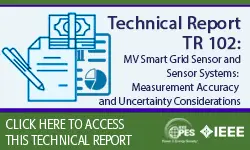-
Members: FreePES
IEEE Members: $45.00
Non-members: $70.00Pages/Slides: 244
29 Aug 2003
Forward The first IEEE Tutorial on Supervisory Control and Data Acquisition Systems (SCADA) was published in 1981. This tutorial was updated in 1989 and again in 1994. Each of these tutorials was presented at the IEEE-PES Summer and Winter meetings several times. In addition they were presented numerous times at the IEEE Section level. The high level of interest demonstrates a continuing need to update and presentthis topic to keep pace with the changing technology and the influx of new personnel. The first two tutorials were based on the traditional SCADA system structure of a Master Station with one or more Remote Terminal Units (RTUs). Such systems have their roots in patents issued between 1890 and 1930 by engineers working in the telecommunications industry. From 1900 to 1930 many single purpose systems were installed to perform remote control or remote monitoring. John B. Harlow designed one of the earliest forerunners of the modem supervisory systems in 1921. This system automatically detected a change in state at a remote station and reported the change to the control center. John J. Bellamy and Rodney G. Richardson in 1923 developed a remote control system employing an equivalent of the modem "check-before-operate" technique to insure the validity of a selected control point before the actual control was initiated. Harry E. Hershey developed one of the first logging systems in 1927. This system monitored information from a remote station and printed any change in the status of the equipment with a time and date. All of these early systems were electro-mechanical, usually based on the use of telephone-type relays. Electronic systems did not come along until the 1950s and 60s and systems using microprocessors did appear until the mid 1970s and the 1980s. The first successful microprocessor based RTUs were shipped in 1976. The first successful microprocessor based SCADA masters were shipped in the early 1980s. The first UNIX based SCADA master was shipped in 1991. The first applications of these newer technologies were to replace the electro-mechanical equipment that had been installed. This replacement usually resulted in lower cost subsystems with higher reliability. Over time (as the processors became more powerful) the subsystem functionality was increased until in the 1990s the computational processing became very distributed across the individual processors that comprised the SCADA system.
Primary Committee:
Power Engineering Society
Substations Committee
Substations Committee


